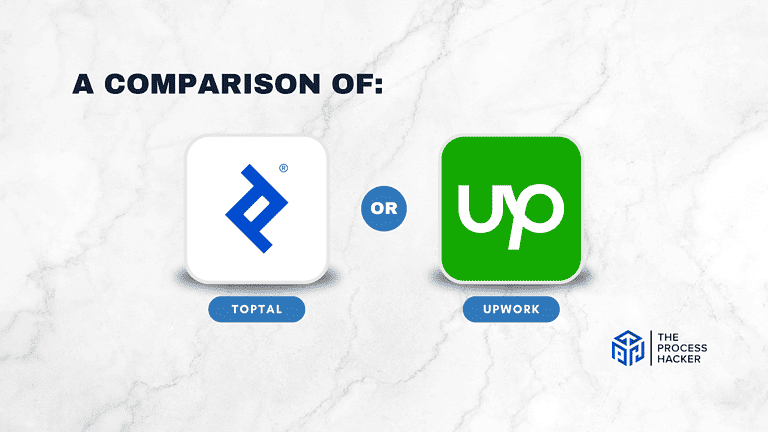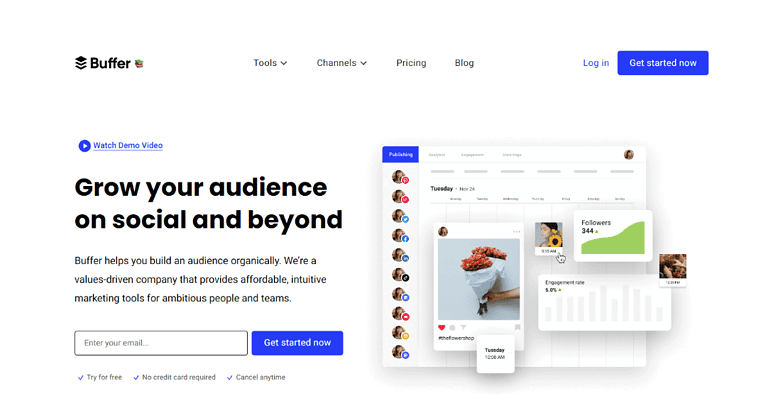How to Handle Customer Complaints: A Comprehensive Guide for Small Business Success
Did you know that 96% of unhappy customers don’t complain, but 91% will simply leave and never come back? That’s a staggering statistic that highlights the importance of proactively addressing customer concerns.
In this comprehensive guide, we’ll equip you with the tools and strategies to gracefully and confidently navigate the tricky terrain of customer complaints. We’ll delve into the psychology of complaints, explore proven communication techniques, and provide actionable steps to overcome poor customer service and resolve issues effectively.
By the end of this article, you’ll be armed with the knowledge to handle complaints and leverage them to build stronger customer relationships and create loyal customers.
What is Effective Customer Complaint Handling?
Effective customer complaint handling is more than just fixing a problem. It’s about turning a negative experience into a positive one, building trust, and providing great customer service. At its core, it’s the process of acknowledging, understanding, and resolving customer issues promptly and satisfactorily.
Why is this so important? Every interaction with customers, especially when they express dissatisfaction, shapes their perception of your brand.
Addressing issues promptly and efficiently demonstrates that you value their business and their feedback. It shows that you’re committed to providing excellent service and are willing to go the extra mile to ensure their satisfaction.
Why You Should Master the Art of Handling Customer Complaints
The way you handle customer complaints can significantly impact your business success. It’s not just about resolving the immediate issue but creating a positive experience that leaves a lasting impression. By mastering the art of complaint handling, you can turn dissatisfied customers into loyal advocates, fostering long-term growth and prosperity.
Here are some key benefits of effective complaint handling:
- Improves customer retention and loyalty: Customers are more likely to stick around and continue doing business with you when they feel heard and valued.
- Enhances brand reputation: Positive experiences, even in the face of complaints, can generate positive word-of-mouth and boost your brand’s image.
- Provides valuable insights for business improvement: Complaints offer valuable feedback on areas where you can improve your products, services, or processes.
- Increases customer lifetime value: Satisfied customers spend more and stay with your business longer, contributing to increased revenue.
- Differentiates your business from competitors: Exceptional complaint handling can give you a distinct advantage over the competition.
How to Handle Customer Complaints Like a Pro: The LASSAC Method
Ready to transform those complaints into golden opportunities? The LASSAC method provides a clear, step-by-step approach to effectively managing customer complaints. Let’s explore each step and discover how to apply it to your business.
L – Listen Actively
Active listening is the cornerstone of effective complaint resolution. It involves more than just hearing your customers’ words; it’s about understanding the underlying emotions and expectations driving their feedback. By listening actively, you acknowledge the customer’s feelings and convey that their concerns are important and taken seriously.
Tips for Practicing Active Listening Techniques
- Give Your Full Attention: Avoid distractions. Ensure you are fully present during the interaction, whether on the phone, in person, or via digital communication.
- Reflect and Clarify: Repeat what you’ve heard to confirm your understanding. This practice helps you grasp the complaint more accurately and shows the customer that you are engaged.
- Ask Questions: Employ open-ended questions to delve deeper into the issue. This technique helps uncover the root of the problem and demonstrates that you are thorough in your approach.
Making customers feel heard starts with your response. Use phrases like “I understand why that would be upsetting” or “It makes sense you’d feel that way” to validate their feelings.
Ensure that your verbal and written tone reflects empathy and a genuine desire to resolve the issue. Remember, the goal is to make the customer feel valued and respected throughout the conversation, turning a potentially negative experience into a positive one.
A – Apologize Sincerely
A sincere apology can transform a contentious situation into a moment of connection and understanding. It demonstrates humility and accountability, which are critical in maintaining customer trust. By acknowledging a complaint and expressing genuine regret, you address the issue at hand and reinforce your commitment to customer satisfaction.
Apologizing effectively doesn’t necessarily mean conceding fault, especially when the details may be unclear or liability is not straightforward. The focus should be on the customer’s feelings and your response to their dissatisfaction rather than the specifics of who is to blame.
- Empathize with Their Experience: Focus on the customer’s experience and emotional response. For instance, “I’m really sorry to hear about your frustration,” or “I understand why you’d be upset about this.”
- Acknowledge the Discomfort: Recognize the inconvenience or disappointment. “I’m sorry this has been such a frustrating process for you,” offers acknowledgment without directly admitting fault.
- Express Commitment to Resolve: Reiterate your intention to find a solution. “We’re sorry you’ve had this experience, and we’re committed to making things right.”
Examples of Effective Apology Statements
- “I’m sorry this has inconvenienced you. Let’s see how we can fix this together.”
- “I understand how disappointing it must be to face such issues. I’m sorry for any trouble caused, and I assure you we’re on it.”
- “We’re sorry this situation has caused frustration. We appreciate you bringing this to our attention so we can work on a solution.”
These examples show that you value the customer’s feedback and are proactive about resolving the issue, setting a positive tone for the rest of the interaction.
S – Sympathize with the Customer
Empathy is a powerful tool in customer service that involves feeling what your customer feels and communicating that understanding back to them. It goes beyond basic sympathy to form a genuine connection and reassure customers that their concerns are taken seriously.
- Use Empathetic Language: Incorporate phrases that reflect understanding and care. Words like “I can see why you’d feel that way” or “That sounds really challenging” help convey empathy.
- Mirror Their Emotions: Your responses should reflect the customer’s emotions. If they are upset, your tone should be concerned and attentive. If they are frustrated, acknowledge that frustration without escalating the emotions.
- Validate Their Feelings: Let them know their feelings are normal and understandable given the situation. Validation can defuse much of the emotional charge and help move toward resolution.
Understanding the customer’s perspective is crucial in empathetic interaction. This means thinking about how you would feel and react if you were in the customer’s position.
S – Solve the Problem
Once you’ve actively listened and apologized sincerely, it’s time to take action and solve the problem. This involves identifying the root cause of the complaint, offering reasonable solutions, and involving the customer in the resolution process.
Here are some steps to identify the root cause of the complaint:
- Gather all the relevant information: Ask questions, review documentation, and consult with colleagues if necessary.
- Analyze the situation: Look for patterns, identify potential causes, and consider the customer’s perspective.
- Communicate your findings: Explain to the customer what you believe the issue is and how you plan to address it.
When offering solutions, keep the following in mind:
- Be realistic and transparent: Don’t overpromise or make commitments you can’t keep.
- Offer options: Provide the customer with a choice whenever possible.
- Explain the benefits: Clearly communicate how your proposed solution will address their concerns.
Involving the customer in the resolution process is crucial. It empowers them and demonstrates your commitment to their satisfaction. Ask for their input, consider their preferences, and keep them informed throughout the process. This collaborative approach can turn a complaint into an opportunity to build a stronger relationship.
A – Act Quickly
In today’s fast-paced world, time is of the essence. Customers expect prompt responses and swift resolutions to their complaints. Delaying action can exacerbate their frustration and damage your reputation. That’s why acting quickly and efficiently is crucial when addressing customer concerns.
The significance of timely responses must be balanced. They demonstrate that you value their time and are committed to resolving their issue immediately. They also prevent the situation from escalating and minimize the potential for negative word-of-mouth.
It’s important to set up efficient complaint-handling processes to ensure swift action. This may involve:
- Establishing clear communication channels: Make it easy for customers to reach you through various channels, such as phone, email, or social media.
- Assigning responsibility: Designate specific individuals or customer service teams to handle complaints and empower them to take action.
- Setting response time goals: Aim to acknowledge complaints within a specific timeframe, such as 24 hours.
- Tracking and monitoring progress: Use a CRM or other tools to keep track of complaints and ensure they’re resolved promptly.
Technology can also play a key role in speeding up resolution times. Consider utilizing tools such as:
- Live chat: Provide real-time support and address concerns immediately.
- Chatbots: Automate simple inquiries and free up your team to handle more complex issues.
- Helpdesk software: Streamline complaint management and track progress.
- Social media monitoring: Stay on top of customer feedback and address issues proactively.
You demonstrate your commitment to customer satisfaction and build trust in your brand by acting quickly and efficiently.
C – Close the Loop
The final step in the LASSAC method is to close the loop. This involves following up with the customer to ensure they’re satisfied with the resolution and to express your appreciation for their feedback. It’s a crucial step that demonstrates your commitment to their satisfaction and can turn a negative experience into a positive one.
Here’s why follow-up communication is so important:
- It shows you care: Following up demonstrates that you’re interested in resolving the immediate issue and ensuring the customer’s long-term satisfaction.
- It provides an opportunity to gather feedback: You can ask the customer if they’re happy with the resolution and if there’s anything else you can do to improve their experience.
- It strengthens the relationship: By going the extra mile, you build trust and customer loyalty, turning a complainer into a potential advocate.
Key Considerations for Successfully Handling Customer Complaints
It’s about creating a robust system that consistently supports excellent customer service. To achieve this, businesses must focus on comprehensive training, advanced technology, and a culture prioritizing customer satisfaction.
These foundational elements ensure that your team is prepared, empowered, and motivated to handle any customer issue that arises.
Training Your Customer Service Team
Ongoing training is essential to keep your customer service team up-to-date with the latest tools, techniques, and standards for effective complaint handling. Continuous learning helps customer service reps adapt to evolving customer expectations and ensures your team always performs at their best.
Key Skills to Develop in Customer Service Representatives:
- Communication Skills: Clear and compassionate communication is crucial.
- Problem-Solving Skills: Ability to quickly identify solutions.
- Emotional Intelligence: Understanding and responding to the emotions of others.
Role-playing exercises are an effective training tool that helps prepare representatives for various scenarios. These simulations can improve decision-making under pressure and enhance empathy, leading to better resolution rates and customer satisfaction.
Leveraging Technology for Complaint Management
CRM systems play a pivotal role in managing customer interactions and data. They help track all communications and resolutions, ensuring nothing slips through the cracks and that every customer interaction is logged and analyzed for future reference.
AI-powered chatbots can handle initial inquiries and basic complaints, directing more complex issues to human representatives. This speeds up response times and allows your team to focus on more nuanced problem-solving.
Monitoring tools are essential with the increasing use of social media as a platform for customer feedback. These tools help quickly identify and respond to online complaints, protecting your brand reputation and promptly addressing customer issues.
Creating a Customer-Centric Culture
Building a customer-centric culture starts with leadership. It requires consistent messaging from the top that customer satisfaction is a priority. This mindset should be integrated into all training programs and company policies.
Leaders must model the customer-first approach in their actions and decision-making. By openly prioritizing customer satisfaction and complaint resolution, leaders set a standard for the rest of the organization.
Acknowledging and rewarding staff for exceptional service motivates and reinforces the behaviors that lead to customer satisfaction. Regular recognition can inspire the entire team and strengthen commitment to quality customer service.
Taking it to the Next Level: Proactive Complaint Prevention
Effective complaint handling isn’t just about managing issues as they arise—it also involves anticipating potential problems and addressing them proactively.
By integrating systematic feedback mechanisms and regular assessments into your customer service framework, you can reduce the frequency of customer complaints and enhance overall customer satisfaction and loyalty.
Setting up structured channels for loyal customers to provide feedback—both positive and negative—enables businesses to gather valuable insights continuously. These could include digital comment boxes, feedback forms on your website, or dedicated email addresses for customer opinions.
Conducting periodic surveys helps gauge customer satisfaction levels and identify areas needing improvement. These surveys can be tailored to follow up on recent purchases or interactions to get real-time, actionable data.
Turning Common Customer Complaints into Opportunities for Growth
View every complaint as a chance to improve. Customers complain because they want changes to the services being provided. This mindset encourages a constructive response to feedback and integrates it into your business’s growth strategy. Regularly review and analyze complaints from a dissatisfied customer to identify any patterns or recurring issues that could inform strategic changes or improvements.
Act on the insights gathered from complaint analysis by making targeted changes in your operations, customer service protocols, or product offerings. Inform your customers about these changes, showing that their feedback is valuable and taken seriously.
Alternatives to Traditional Complaint Handling
Develop self-service resources such as FAQs, how-to guides, and troubleshooting steps available on your website or through mobile apps. These resources empower customers to resolve their issues independently without contacting customer service directly.
Encourage the formation of user communities around your products or services. Forums, social media groups, and other online platforms where customers can discuss issues and share solutions can be very effective. This reduces the load on your customer service team and builds a supportive customer network.
Implement outreach initiatives that contact customers before they need to reach out with a complaint. These include courtesy calls, follow-up emails post-purchase, or preemptive service checks. Such proactive contacts can identify and solve problems before they escalate and improve the overall customer relationship.
Final Thoughts on Handling Customer Complaints
Handling customer complaints effectively is crucial for any business aiming to build lasting relationships and a strong reputation.
By adopting a structured approach like the LASSAC method, thoroughly training your team, leveraging technology, and fostering a customer-centric culture, you can transform challenges into opportunities for growth. Proactive complaint prevention and innovative handling strategies reduce the incidence of complaints and enhance customer satisfaction and loyalty.
Remember, every complaint is a direct line of customer feedback, offering invaluable insights that can drive continuous improvement and innovation. Embrace these moments as chances to distinguish your business by demonstrating your commitment to customer care and ability to adapt and improve continually.
Ultimately, how you handle complaints can define the perception of your brand and influence your success in the competitive marketplace.






